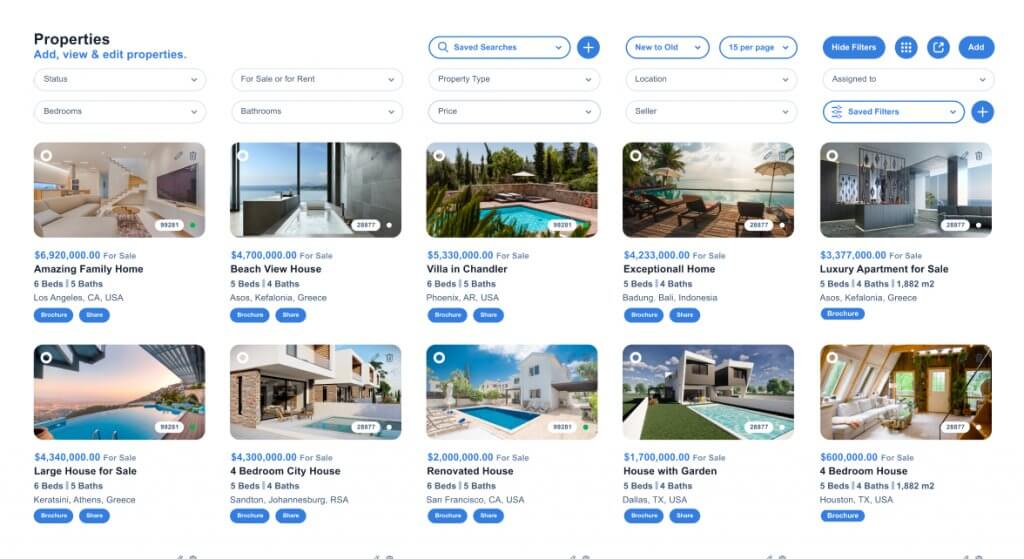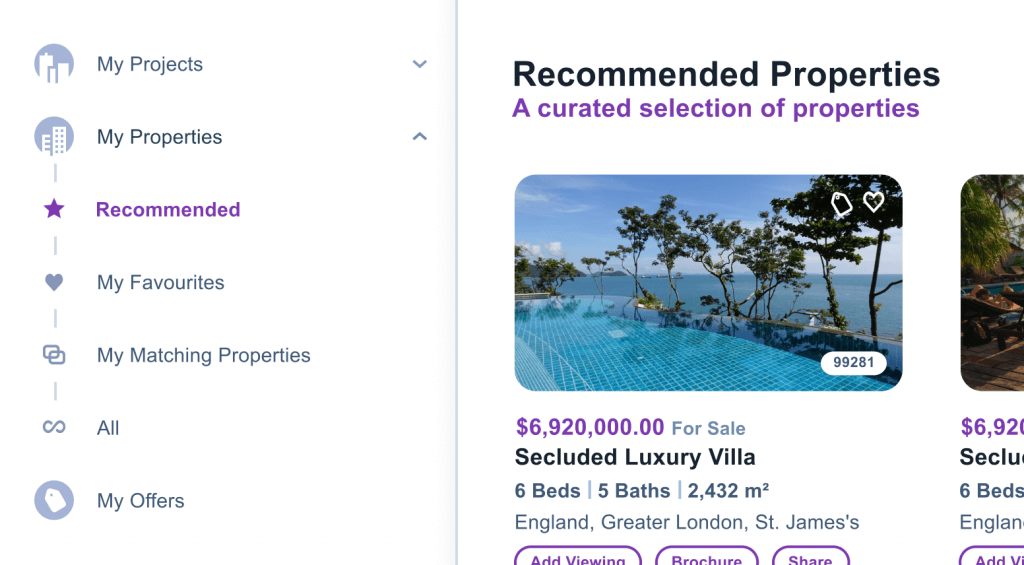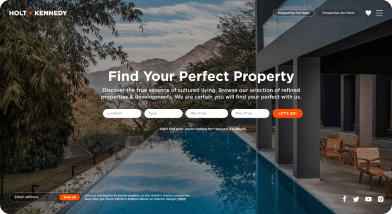In our last blog we discussed the impact of real estate videos in boosting lead generation and sales. In today’s blog, we’ll look at several video making tips to consider when producing video content to attract your target audience. We discuss different types of videos to create, how to make the videos rank better on search engines, branding, messaging, and more.
Table of Contents
- Decide on what type of real estate video you’d like to create
- Communicate a message that resonates with your target audience
- Be mindful of how long your real estate videos are
- Make your real estate videos more searchable so that they rank well on search engines
- Use relevant branding to distinguish yourself from your competitors
- Conclusion
1. Decide on what type of real estate video you’d like to create
For real estate professionals, a webcam video is terrific for introductions, building relationships and email prospecting. Why? As Vidyard explains, “in a webcam video, a sales rep records themselves speaking to the camera. It’s the next best thing to an in-person interaction: It travels anywhere an email does, but earns you face time where prospects would otherwise only get to know you through cold-hard text.”
Other great ideas include How-To or Educational real estate videos, Live videos, real estate videos with animation, customer testimonial videos, and many others. You can read more about the most popular types of videos for real estate in our most recent blog.
2. Communicate a message that resonates with your target audience
Prospective homebuyers have different needs. The questions being asked will be different for every person. So do some research. Give some thought to what challenges your target audience faces and the answers they’re seeking. Use this information to create a video with a message that resonates enough to compel that audience to reach out. You don’t want to be answering every question but provide just enough information to get them to respond.
3. Be mindful of how long your real estate videos are
A study by Microsoft concluded that the human attention span has dropped to eight seconds – shrinking nearly 25% in just a few years. This makes being mindful of the length of your video essential. According to Vidyard, “the rule of thumb is to keep most videos under two minutes, but optimal video length varies depending on where you share or embed it.”
Here are some other interesting Vidyard video stats to consider:
- The average number of videos over 20 minutes in length grew 66% in 2020 indicated an increasing focus on longer-form educational content, such as on-demand webinars
- 58% of viewers watch a business-related video all the way through if it’s less than 60 seconds
- Only 24% will finish a video if it’s longer than 20 minutes
- 59.9% indicated that a video being too long would strongly deter them from watching
- Facebook recommends that small businesses try keeping videos to around 15 seconds as much as possible. They shared that 47% of value in a video is delivered in the first 3 seconds
- Videos that are an average of 26 seconds receive the most comments on Instagram
4. Make your real estate videos more searchable so that they rank well on search engines
Just like any other form of content, videos also need to be fully optimised so that they rank well on SERPs (search engine results pages). So how does one do this?
- Incorporate keywords that you want to rank for. One way of doing this is by visiting YouTube and popping in a word or phrase. YouTube will give you a bunch of keywords which are great as these are the words that people type into YouTube (Backlinko).
Other tips from SEMRUSH include:
- “Don’t stuff keywords into the description, and don’t lure people using a false description. Penalties will apply if you do. Your video description works much like a meta description. It should be relatively short and to the point with some keywords included.
- Tag your video appropriately. Video tags help categorize your video. When combined with the title and the description, video tags work in SEO harmony and can help boost your video up the search rankings. Video tags help Google return videos that match search intent and can help users find similar videos by selecting the tags to search under.
- Transcribing your video is great for SEO. Transcripts are the text that appear in your video’s closed captions. They can also appear in the comments below the video.
- Use a thumbnail that compels people to click on the video. If you don’t, you stand the risk of YouTube selecting an image from the video for the thumbnail that’s not suitable. This may reflect poorly on your brand and simply look unprofessional.”
5. Use relevant branding to distinguish yourself from your competitors
Be sure to integrate your company’s branding elements into the real estate video. This includes the logo, relevant colour palette, typography, photography, illustrations, animations, and icons. Consistency is key to establish a cohesive and recognisable visual identity.
Remember, as Column Five suggests, “a strong visual identity isn’t pretty; it it’s purposeful, helping you communicate who you are, no matter the medium. More specifically, a good visual identity is:
- Distinct: It’s unique and stands out from the crowd. (Think of iconic brands like Nike or Apple.)
- Memorable: It makes an impression.
- Scalable: It should be able to grow with your brand, whether you’re branching out into new products, services, or even new industries. As you go through the process of designing, remember that you aren’t just designing for today. You’re designing for your brand’s future.
- Flexible: It works across different mediums, such as web, print, etc.
- Cohesive: Every piece works together. Thus, your content stays consistent.
- Easy to apply: You want to equip your brand designers (and any content creators) with the tools they need to properly do their job, so it needs to be intuitive to use.”
6. Conclusion
The take-away is that real estate videos should be about pushing boundaries and finding new unique ways to communicate with your audience. No matter what type of video you create, be intentional. Know what your audience wants to see and cater to their needs. Do this in a way that’s engaging, authentic and informative.




